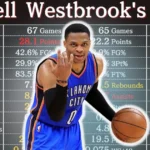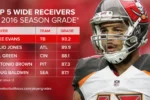Reading moving odds in football is a critical skill for football bettors aiming to maximize profit. Odds rarely remain static; they shift in response to new information, betting volumes, and market trends. For players, reading these changes correctly can mean the difference between long-term success and repeated losses.
This article explains everything from the basic definition of moving odds, to why odds fluctuate, to identifying signals, and distinguishing between real and fake movements. Readers will also learn analytical techniques, risk management strategies, and responsible gambling practices, before looking ahead to the future of digital betting.
What Are Moving Odds in Football Betting?
Moving odds: dynamic changes in betting prices set by bookmakers to reflect updated probabilities. In football betting, “ราคาบอลไหล” describes how odds shift upward or downward as conditions evolve. For example, a team may open with odds of 2.00 but move to 1.80 if large volumes of bets support them or if positive team news emerges.
The movement reflects supply and demand, similar to financial markets. Bookmakers adjust to balance exposure, while bettors interpret these changes as potential signals of underlying truths. Understanding the definition and mechanics of moving odds sets the foundation for appreciating why they matter.
Why Do Odds Change Before and During a Match?
Odds change for several factual reasons, all tied to information and market activity:
- Team News: Injuries, suspensions, or last-minute lineup changes directly influence perceived strength.
- Form and Performance: Recent results, winning streaks, or slumps shift market confidence.
- Betting Volume: Heavy wagers on one side force bookmakers to adjust odds to manage risk.
- Market Sentiment: Public opinion and hype can drive odds independent of hard data.
- Live Conditions: Weather, red cards, or in-game performance alter odds during play.
These factors create a living market that reacts in real time. Recognizing why odds move is essential before learning how to read the signals within those movements.
Key Signals to Watch When Odds Move
Professional bettors often watch for specific signals that accompany moving odds:
- Sharp Drops in Odds: A rapid fall suggests strong confidence in one outcome.
- Sudden Reversals: Odds shifting back after a drop may indicate overreaction.
- Consistent Movement: Gradual changes signal steady market confidence.
- Disproportionate Shifts: Odds moving strongly despite little news may hint at insider influence.
- Live Adjustments: Quick changes during a match reveal the bookmaker’s real-time reassessment.
These signals provide direction but must be interpreted carefully. The next skill is distinguishing between genuine market signals and misleading moves.
Differentiating Between Real and Fake Odds Movements
Not every odds movement reflects genuine probability changes. Some shifts, called “ราคาหลอก” (fake odds), are designed to mislead. Bookmakers may adjust odds temporarily to influence betting patterns, drawing money toward one side while planning to profit from the other.
The key comparison is:
- Real movements: Based on factual data such as injuries, lineups, or heavy betting volumes.
- Fake movements: Artificial adjustments meant to manipulate public perception.
Understanding this distinction is crucial. Treating every change as real risks misinterpretation, while assuming manipulation everywhere prevents players from recognizing genuine signals. Analytical techniques help resolve this uncertainty.
Analytical Techniques for Reading Moving Odds
Reading odds effectively requires systematic analysis supported by statistics. Techniques include:
- Price Graph Analysis: Tracking odds visually over time reveals patterns and anomalies.
- Team Statistics: Metrics such as possession rates, shots per game, and expected goals (xG) provide context.
- Market Comparison: Comparing odds across multiple bookmakers highlights unusual shifts.
- Volume Tracking: Monitoring betting volume spikes shows when large investors enter the market.
For example, if odds drop from 2.20 to 1.80 within hours, but statistical data shows no lineup change or injury, bettors may suspect artificial influence. By blending data with calculator tools, decisions become more grounded. This analysis naturally connects to money management.
Risk Management When Betting on Moving Odds
Even accurate odds reading cannot guarantee success without strong risk control. Players should adopt different approaches depending on bankroll and tolerance:
- Flat Betting: Consistent stakes regardless of odds, reducing volatility.
- Percentage Betting: Staking a fixed percentage of bankroll, scaling risk dynamically.
- Stop-Loss Limits: Setting maximum losses per session prevents emotional spirals.
- Hedging Strategies: Placing opposite bets when odds shift drastically to secure profit or minimize losses.
Conditional strategies are essential. A cautious beginner may stick to flat betting, while an advanced bettor with a large bankroll may use percentage staking. In all cases, managing exposure ensures survival over the long run. Yet risk management must align with responsible gambling principles.
Responsible Gambling While Tracking Odds
Responsible gambling ensures that tracking odds does not turn into reckless speculation. Players should view betting as entertainment, not guaranteed profit. Practices include:
- Setting strict budgets and adhering to them.
- Avoiding “chasing losses” after unsuccessful bets.
- Taking regular breaks to avoid fatigue-driven decisions.
- Using platform tools like deposit caps or reminders.
Balanced habits protect players while allowing them to continue learning. With responsibility established, it becomes possible to look ahead to how odds tracking will evolve in the digital age.
The Future of Moving Odds in the Digital Betting Era
The digital era is transforming how moving odds are tracked and analyzed. Artificial intelligence now models probabilities in real time, while big data enables faster, more accurate adjustments. Machine learning systems may soon predict odds movements before they happen by analyzing betting volumes and social media sentiment.
Blockchain technology promises greater transparency, preventing artificial manipulation. Meanwhile, mobile platforms integrate live streams, odds trackers, and calculators, giving players more control. This fusion of technology, sports, and betting creates new opportunities for informed bettors.
Final Thoughts: Mastering Moving Odds with Taladball
After exploring definitions, causes, signals, real versus fake movements, analytical techniques, and responsible strategies, one conclusion is clear: mastering moving odds requires knowledge, tools, and discipline. Taladball provides all three. By offering calculators, educational guides, and community insights, the platform helps players interpret odds with confidence.
Extra Learning Resources from Taladball
Taladball is more than a betting platform—it is a knowledge hub. Users gain access to tutorials, guides, and community discussions designed to improve understanding of odds movements. This environment ensures players not only place smarter bets but also grow as informed participants in digital betting.
For anyone seeking to จับราคาบอลไหล ดูสัญญาณ เปลี่ยนทิศ, Taladball delivers both the tools and the knowledge to do so effectively. By combining education, technology, and responsibility, it turns complex odds movements into clear opportunities for confident play.









